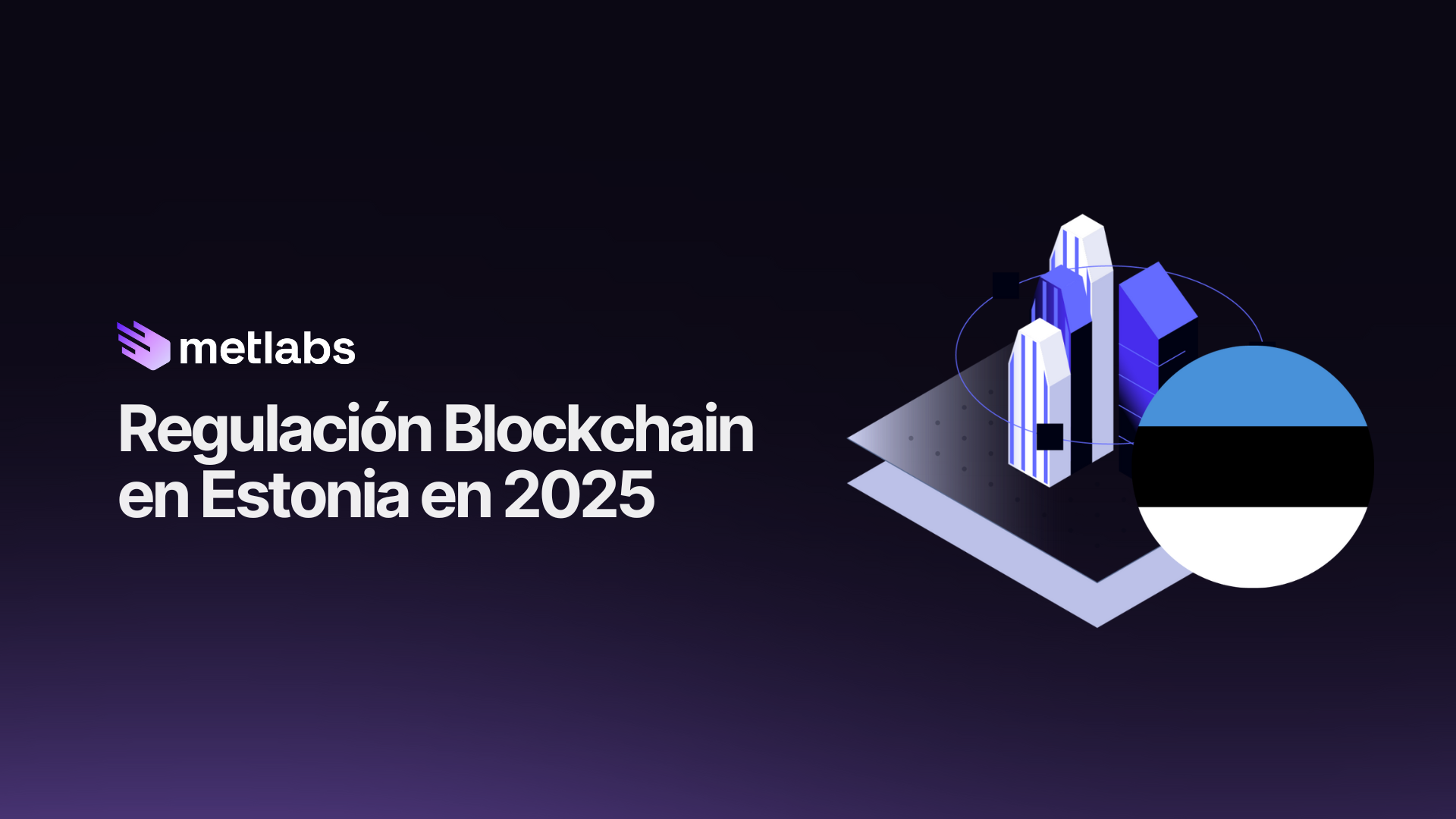The adoption of blockchain technology and asset tokenization is advancing at a rapid pace, but the real engine driving its global development is the existence of a clear, consistent and innovation-friendly legal framework.
Some countries have already established themselves as regulatory benchmarks, establishing specific rules for cryptoassets, DLT infrastructures and token issuance with legal backing. In this article we show you relevant information about blockchain regulation in Estonia, which you can use as a guide if you are looking to operate internationally or evaluate different strategic locations.

Current legislation on blockchain and virtual assets in Estonia.
MiCA Regulation (Markets in Crypto-Assets Regulation)
Establishes the EU’s first comprehensive legal framework for regulating cryptoasset issuers and service providers (CASPs). Covers stablecoins, utility tokens, electronic money tokens (EMTs), asset referenced tokens (ARTs), and custody or exchange platforms. Requires prior authorization, governance requirements, solvency, transparency, and user protection.
MiFID II (Markets in Financial Instruments Directive II)
European Directive that regulates the markets of traditional financial instruments and also applies to cryptoassets considered as financial instruments (e.g. security tokens). It establishes rules on transparency, investor protection, advisory services, order execution and prudential requirements for investment firms.
Prevention of Money Laundering and Terrorist Financing Act (as amended 2022)
This law is the regulatory pillar for virtual asset service providers in Estonia. It requires mandatory state license to operate, enhanced capital requirements, physical presence, KYC/AML controls and accounting audit. The Financial Intelligence Unit monitors compliance and can revoke licenses for non-compliance or lack of actual activity in Estonia.
Estonian regulatory sandbox
The Estonian government has announced the introduction of a regulatory sandbox framework for emerging technologies, including blockchain and fintech, which will allow companies to test innovations in a controlled environment prior to commercial launch. This initiative seeks to encourage experimentation and collaboration between startups and regulators.
Tokenization makes it possible to digitally represent real-world assets through blockchain, but for it to have legal value, a regulatory framework recognizing this operation is essential. Estonia adopts its own approach, establishing specific rules for the issuance, custody or trading of tokens. In this block we explain how asset tokenization is regulated from a legal point of view, taking an advanced jurisdiction such as Estonia as an example.
Regulation of asset tokenization in Estonia
The regulation of asset tokenization in Estonia is based on the Prevention of Money Laundering and Terrorist Financing Act, along with the full implementation of the MiCA Regulation. Issuers of tokens representing financial assets, such as stocks, bonds or fund shares, must comply with the prospectus, authorization and transparency requirements under MiCA and, in the case of security tokens, with MiFID II. Token trading and custody platforms are subject to state licensing and strict governance, capital and audit controls, with direct oversight by the Financial Intelligence Unit.
For tokenization of non-financial assets the analysis is on a case-by-case basis, applying civil and tax legislation, in addition to general MiCA and AML/CFT obligations. Estonia does not have an operational regulatory sandbox in 2025, but it is scheduled to be launched by the end of the year, which will facilitate controlled experimentation with blockchain-based infrastructures and business models. The Estonian regulatory environment is characterized by rigorous licensing and supervision, revocation of inactive permits and full convergence with FATF standards and European regulation, ensuring legal certainty and protection for investors, companies and institutions operating in the digital ecosystem.
Regulatory bodies and authorities for digital assets in Estonia
Estonian Financial Intelligence Unit (FIU)
Currently, and since MiCA came into force, the FIU only supervises old licensees in transition until July 2026, when all supervision and licensing of new licenses will become the responsibility of the FSA. Its current role is mainly AML/CFT control and revocation of inactive licenses.
Estonian Financial Supervisory Authority (FSA; Finantsinspektsioon)
The FSA is the primary authority for the licensing, registration and supervision of CASPs and issuers under MiCA and national regulations. It oversees compliance with capital, governance, customer protection and transparency requirements. From July 2026, only licenses issued by the FSA or another EU member state will be valid to operate in Estonia.
Ministry of Finance of Estonia
This Ministry participates in the elaboration and updating of the regulatory framework applicable to digital assets, including the implementation of the MiCA Regulation and harmonization with other European directives. It coordinates the national strategy on financial technology and regulates the conditions for the use of DLT in the public administration and the financial sector.
Launching a business based on digital assets requires more than just technology: it is also necessary to comply with legal requirements such as licensing, registration and regulatory obligations. These conditions ensure that the business model is viable and sustainable over time, and that it complies with transparency and fraud prevention standards. In this section we explore what licenses are typically required and what compliance criteria blockchain companies operating in Estonia must follow.

What licenses and requirements are needed to trade cryptoassets in Estonia?
CASP License (MiCA)
CASP licensing is mandatory under the MiCA Regulation for exchanges, custodians and issuers of ART and EMT tokens operating in Estonia or the EU. The license must be obtained from the FSA or the relevant authority of another member state and involves capital, governance, user protection and technical security requirements. During the transitional period, nationally licensed CASPs may continue to operate under enhanced supervision.
FIU registration and suitability assessment
Every operator must be registered with the FIU before starting business, even if already licensed as a CASP. The FIU evaluates the suitability of management, corporate structure, internal controls and compliance mechanisms. Failure to register or incomplete information may lead to suspension or denial of the operating permit.
AML/KYC compliance
The Estonian Anti-Money Laundering Act imposes detailed obligations on CASPs and platforms dealing with digital assets. It includes requirements for customer verification, transaction monitoring, identification of beneficial owners and mandatory reporting of suspicious transactions. Failure to comply with these rules may result in fines or revocation of the MiCA license.
Are you exploring developing your blockchain project in Estonia?
At Metlabs we help companies like yours and offer comprehensive support in the development of blockchain projects and tokenization of assets such as real estate, carbon credits, commodities, intellectual property, financial instruments, franchises and more, fully aligned with Estonian blockchain regulation and international regulatory standards.
Contact us and find out how we can help you meeting all your business model needs, from technical validation and structuring to design, development and implementation of custom blockchain solutions, ready to scale from day one.



